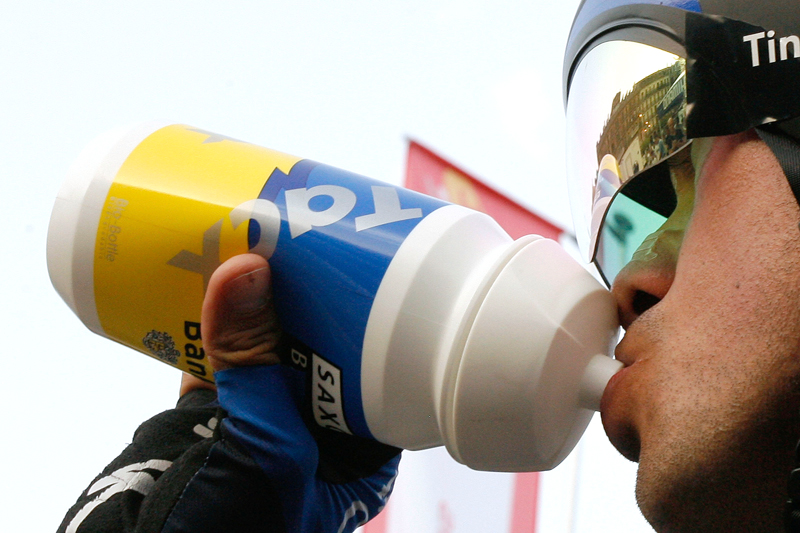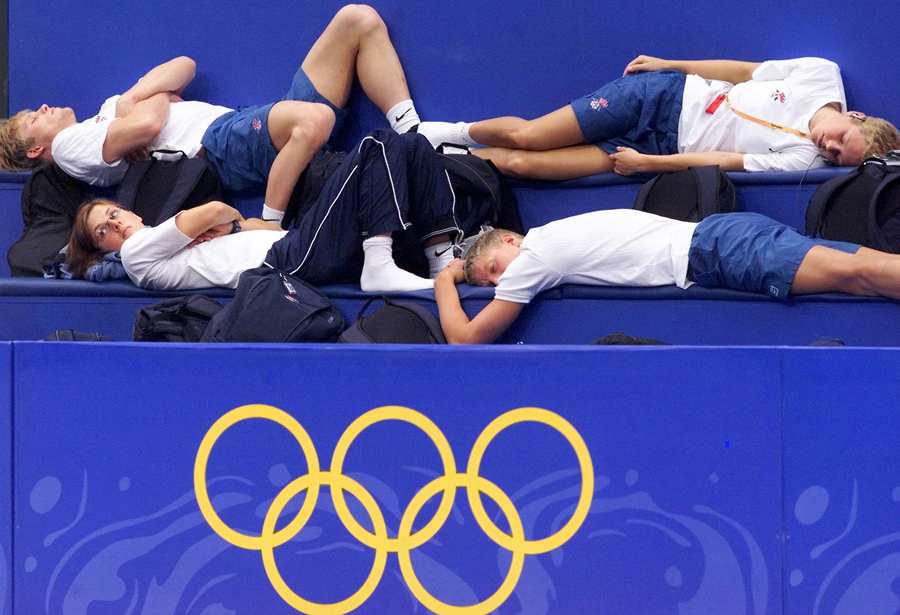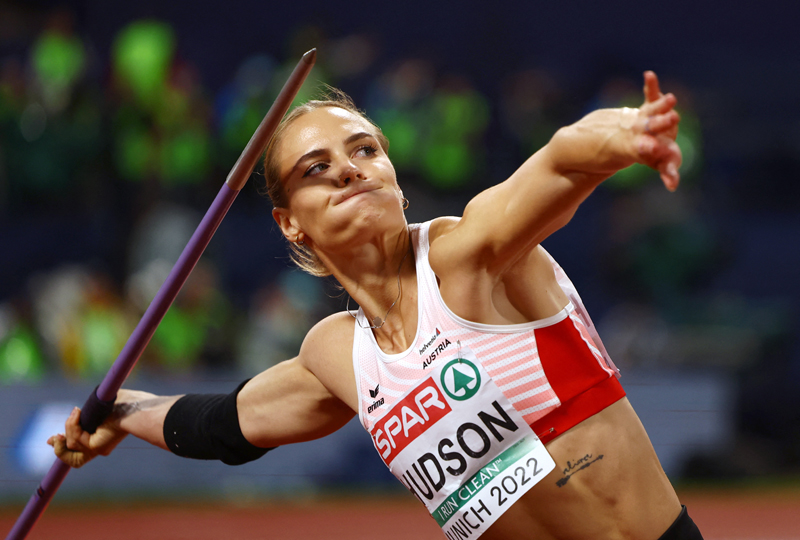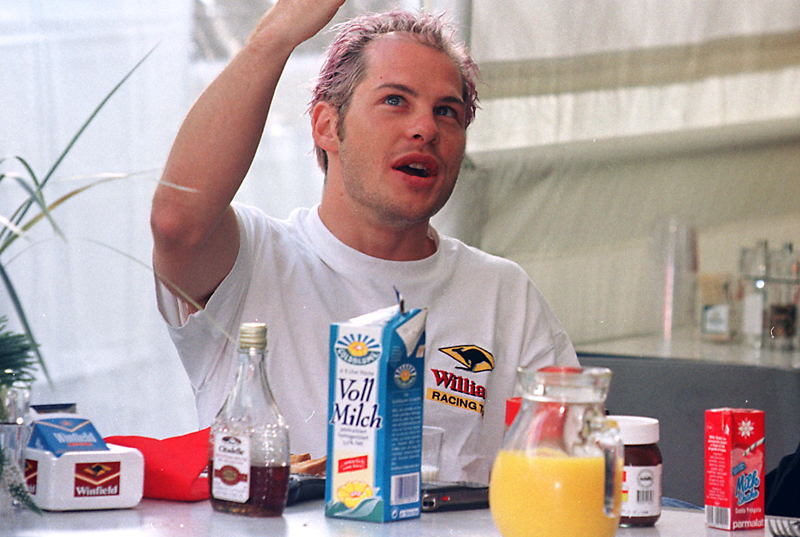Sports nutrition: is Coca-Cola an effective sports drink?
A number of athletes have used Coca-Cola to fuel their exercise and are reporting that ’it works’

Why is Coke so popular? At first glance, it seems an unlikely sports-drink candidate. Its carbohydrate content checks in at about 11 per cent, a bit too high for a sports beverage (exercise scientists have identified 5 to 9 per cent as the optimal range for sports-drink carbohydrate concentrations; beyond 9 percent, gastric emptying is retarded, and water may even be dragged into the gut to dilute the excess carbs, robbing tissues and blood of fluid). In addition, Coke offers little in the way of electrolytes, and its carbonation is thought to increase the risk of gastric upsets during exercise. Finally, Coke’s acidic content and artificial colours make the beverage in the red-and-white can an improbable choice for serious athletes.
Indeed, when Coke first saw the light of day - back in 1886 when an Atlanta, Georgia pharmacist named John Pemberton formulated it, the dark brew was touted not as a performance enhancer but as a tonic for most common medical ailments, and it contained two key ingredients which have long held a fascination for members of the human race - cocaine and caffeine. The cocaine of course came from leaves of the coca plant, and the caffeine originated in extracts of kola nuts, giving rise to the name Coca-Cola (the ’K’ in Kola was replaced with a C for marketing purposes). While it’s doubtful that the cocaine and caffeine actually cured any maladies, they probably made many Coke users feel much better.
Perhaps too heavily under the influence of his own special concoction, Pemberton sold the ownership of his business to another Atlanta pharmacist, Asa Griggs Candler, for $2300 in 1891. Under Candler, the company boomed - and was sold to a group of Atlanta investors in 1919 for $25 million, a neat return on Candler’s original investment. Candler himself became a bit of a philanthropist; his aid to Emory College, originally located outside Atlanta, allowed the school to move within the city limits and become Emory University, and his donation of $2 million permitted the construction of an entire teaching hospital next to the university’s medical school. Incidentally, Coke dropped cocaine from its list of ingredients in 1905, just in time for it to be advertised in 1906 as ’the national temperance drink’.
Although Coke no longer possesses a hearty dose of cocaine, it does still contain caffeine, a demonstrated ergogenic aid, so it’s quite possible that athletes love Coke because of its caffeine buzz. The fact that cyclists reach for Coke during the latter stages of their races, when fatigue is at its highest level (and when caffeine’s boost would likely be most beneficial), suggests that caffeine may be Coke’s big draw, but what does science have to say? Is there any evidence that Coke actually works well as a performance enhancer?
The physiology of Coke
Research concerning the physiological effects associated with Coke consumption actually dates back to the 1970s, when Coke was also very popular among athletes. In a simple study carried out at Ball State University, 12 fasted adults (six men and six women who were not chronic caffeine users) were given 10 ounces of cola with either 0, 22.5, 35, or 150 mg of caffeine (there is some dispute about how much caffeine is actually present in a 12-ounce can of Coke, with estimates ranging from 30 to about 45 mg). Heart rate, blood pressure, blood-glucose level, and blood free-fatty-acid concentration were then monitored for six hours.Only the cola with 150 mg of caffeine was able to dramatically boost blood levels of free fatty acids (a 22-per cent increase), an effect which some sports scientists have suggested would enhance endurance performance (the fatty acids might serve as a rich lode of energy as muscle-glycogen stores become depleted). Smaller quantities of caffeine (22.5 and 35 mg) raised fatty acids by just 6 per cent, and fats stayed constant when no caffeine was in the cola.
Blood glucose tended to drop slowly but steadily during the six hours after ingestion of 0, 22.5, or 35 mg of caffeine (no food was ingested during that time period) but actually rose slightly with 150 mg of caffeine. That may seem surprising, since no nutrients were consumed during the monitoring, but a decent dose of caffeine tends to stimulate the release of two key hormones - epinephrine and norepinephrine - which can increase blood-sugar levels. Somewhat surprisingly, heart rate actually dropped by about six beats per minute after caffeine ingestion, but it also did so with zero caffeine, so we can simply say that caffeine didn’t blast heart rate upward or prevent it from falling naturally. Blood pressure did rise a bit, however, especially after the 150-mg dose.
Although this research was carried out sans exercise, the findings suggest a possible positive role for Coke during exercise. Basically, the elevated fatty acids, better-maintained blood-glucose levels, and enhanced release of epinephrine and norepinephrine which could be produced by Coke’s caffeine might all augment exercise capacity (glucose could be used by muscles for energy, and epinephrine could increase the strength of muscular contractions). In addition, if Coke’s carbos were diluted a bit (by mixing Coke with a little water, for example), the carbohydrate in Coke could be an excellent, well-absorbed source of fuel during prolonged exercise.
Those damn bubbles
In related follow-up research, investigators at the Washington University School of Medicine in St. Louis examined the effects of ingesting a carbonated, carbohydrate-rich beverage similar to Coca-Cola during strenuous exercise. In this study, eight experienced cyclists pedalled exercise bikes at an intensity of about 70 per cent VO2max for one hour and 45 minutes - and then worked as hard as possible for an additional 15 minutes (thus riding for a total of two hours).The cyclists performed this routine on four separate occasions, each time using a drink of differing composition. In one case, the drink was a carbonated, 10-per-cent-carbohydrate beverage (very close to Coke’s 11-per cent concentration); during another workout, a non-carbonated, 10-per-cent-carbohydrate drink was utilized. The subjects also completed the workout with both carbonated and non-carbonated drinks which contained no carbohydrate at all. In all cases, the beverages were ingested at intake rates of five ounces just before the workouts began and then five more ounces every 15 minutes during exercise.
There was only one small negative associated with carbonation; the carbonated, 10-per-cent-carbohydrate solution did empty from the athletes’ stomachs slightly more slowly than the non-carbonated, zero-carbohydrate drink (however, the carbonated, zero-carbohydrate beverage did not slow things down, indicating that carbonation per se is not a severe inhibitor of gastric emptying and thus absorption).
The positive news was that the carbonated beverages felt just as comfortable in the athletes’ guts as the non-carbonated ones throughout the rugged, two-hour exercise periods. The athletes did feel a greater need to eruct (belch) when using the carbonated sports drinks, but they felt quite comfortable while doing so (bear in mind that cyclists were involved in this research - runners wouldn’t necessarily feel as good with bubbles in their bellies; this isn’t because runners are more inhibited about eructation but merely reflects the fact that the jostling associated with running can make gaseous stomach contents feel unbearable).
Another positive was that the carbonated, high-carbohydrate drink (as well as the non-carbonated, high-carbo one) had a dramatic impact on performance, shooting up power outputs during the final 15-minute sequences of the rides by about 8 per cent. These two drinks also allowed cyclists to work at a significantly higher fraction of VO2max during those last 15 minutes. What really happened was that the carbohydrate contained in the carbonated and non-carbonated 10-per-cent drinks provided an additional source of fuel for leg muscles depleted of glycogen after 105 minutes of riding. The presence of carbonation did not in any way interfere with carbohydrate’s ability to deliver the goods.
One knock against carbonated beverages is that they add excessive amounts of carbon dioxide to the blood, throwing out the blood’s acid-base status. However, the Washington University researchers were able to show that the cyclists’ blood acidity was exactly the same when using carbonated and non-carbonated drinks (the blood easily handled the increased absorption of CO2). Some individuals have also worried that carbonated beverages might interfere with the oxygen-transport capacity of the blood, but there is little basis for this concern.
It’s the caffeine that counts
So why is Coke so popular with athletes? The research shows that Coke’s carbonation is not especially troublesome during exercise (and most athletes de-fizz it anyway). Coke’s carbohydrate can keep muscles working as glycogen levels plummet, and if Coke is mixed half-and-half with Gatorade, for example, which some athletes do, the resulting mixture possesses a carbohydrate content of about 8.6-8.7 percent, which is within the optimal range of carbohydrate concentrations.But, no doubt the real appeal of Coke is due to its caffeine (as mentioned, a 12-ounce slug of Coke has between 30 and 45 mg of caffeine, slightly less than the increasingly popular Mountain Dew). As regular readers of Sports Performance Bulletin are aware, caffeine has been shown to be performance-enhancing in a variety of different studies, and it continues to vie with creatine for the position of the hottest legal ergogenic aid available to athletes. In the past three years, research has shown that caffeine can jazz up 1500-metre running performances, improve interval workouts, heighten 100-metre swimming times, bolster sprint-cycling ability, broaden the endurance of experienced cyclists and even rev up 10-K running performances.
To give you a sample of some of this research, scientists at the University of Guelph in Canada recently asked a group of well-trained runners to run to exhaustion at an intensity of 85% VO2max (about 91 per cent of maximal heart rate) one hour after ingesting caffeine tablets, placebo (sugar) tablets, decaffeinated coffee, decaffeinated coffee with added caffeine, or regular coffee.
The first piece of good news in this study was that caffeine did not act as a strong diuretic and therefore did not significantly increase the risk of dehydration during exercise, as some athletes and scientists have feared it would. The second bit of interesting news was that caffeine tablets proved to be extremely ergogenic: the athletes buzzed along at 91 per cent of max heart rate for a full 41 minutes after swallowing the tablets but only managed to run for 26 to 28 minutes after sipping coffee or decaf coffee plus caffeine, even though the actual dosage of caffeine (4.5 mg per kg of body weight, or about the amount in two strong cups of coffee) was the same in all three cases. Following the ingestion of placebo tablets, the runners stumbled to a stop after just 22 minutes.
Why did tablets produce the best perform-ances? ’It’s possible that the caffeine in tablets is absorbed more quickly or is somehow made available to the muscles more rapidly than the caffeine in coffee,’ said Terry Graham, one of the Guelph researchers, who has been carrying out caffeine-related research for the past nine years. ’Coffee contains a multitude of ingredients which might influence caffeine’s activity within the human body.’ If certain chemicals naturally found in coffee do curtail caffeine’s actions a bit, it would explain why regular coffee was no better than decaffeinated coffee in the Guelph investigation, even though the regular coffee obviously contained far more caffeine. Is it possible that something in Coke enhances the absorption and activity of caffeine, or at least that Coke does not inhibit some of caffeine’s power, as regular coffee seems to do?
The Guelph investigation was the first to link caffeine with improved running performances at distances greater than 1500 metres; it basically suggested that an individual who popped about 300 mg of caffeine in tablet form one hour before a 5K or 10K would probably have a better race. ’And we’re not talking about improvements of just a few seconds here,’ noted Graham. ’Our subjects improved their endurance at 85% VO2max (which is just under 10-K intensity) from 26 to 41 minutes, which is a huge gain. That large an effect could translate into a big improvement in 10-K race performance.’
Ironically, Graham has been able to show in other research that the currently banned dose of caffeine - about the amount in five strong mugs of coffee - actually hurts endurance performance. Meanwhile, the accepted dosage - approximately the quantity in two to three cups of coffee - seems to improve performances significantly!
The diuretic factor
Isn’t there still some concern, though, that the caffeine in caffeine tablets or Coke would empty your body of water? Many exercise scientists believe that pre-competition caffeine might expel enough water to raise your body temperature and heart rate during exercise and increase your risk of dehydration.However, taking caffeine before a relatively short race like a 5K or 10K is unlikely to produce significant dehydration during the race, especially since the Guelph scientists found that caffeine-associated diuresis was mild. In addition, if you take in caffeine during your exertions, there’s no real problem, according to recent research at Ohio State University. At OSU, six athletes cycled for three hours at an intensity of 60% VO2max (about 74 per cent of maximal heart rate) while ingesting a caffeinated, carbohydrate-electrolyte sports drink on one occasion and a non-caffeinated sports beverage on a separate date. On two other days, the subjects tippled the two beverages without engaging in any exercise at all.
When no exercise was carried out, caffeine acted as a strong diuretic, hiking urine production by a torrential 31 per cent. However, it was a different story altogether during actual cycling. As the cyclists pedalled along, the use of a caffeinated sports drink didn’t boost urine output at all, compared to drinking the caffeine-free beverage. In addition, caffeine had no effect on heart rate, body temperature, or perceived effort. This was in spite of the fact that the athletes were swallowing the equivalent of two cups of coffee per hour during their three-hour exertions.
The final verdict?
First, if Coke is diluted with other stuff, it appears to have the makings of a good sports beverage. Mixing it half-and-half with Gatorade will give you an 8.7-per cent sports drink which should work very well and taste very strange. Mixing two parts Coke with one part water will leave you with a 7.3-per cent drink which should help performance and won’t taste strange at all (of course, when we say Coke, we’re not talking about diet Coke, which contains no performance-boosting carbohydrates).Another point to consider is that lots of athletes like the taste of Coke, which can be a very good thing, since athletes tend to drink more of things they find palatable. Thus, they might find it easier to gulp down six ounces of Coke every 15 minutes as they cycle or run, compared to a less-pleasing sports drink.
Almost finally, it is very possible that the caffeine in Coke may enhance performance, perhaps by increasing muscular power and/or enhancing muscle function during the late stages of very prolonged exercise (bear in mind, though, that the Coke would probably have to be ingested steadily during the exertion at a rate of about six ounces every 15 minutes, and the effort would have to last for over three hours - in order for enough caffeine to build up to produce an effect). Note, however, that if you are a regular caffeine user, the modest amounts of caffeine in Coke would probably not ’jolt’ you as much as it would the ’virgin’ caffeine user.
That doesn’t mean that Coke is a great drink for everyday use, however. In fact, you should always choose fruit and vegetable juices over Coke for your daily fluid consumption, since they will give you the vitamins and minerals which Coke simply doesn’t have.
Jim Bledsoe
Newsletter Sign Up
Testimonials
Dr. Alexandra Fandetti-Robin, Back & Body Chiropractic
Elspeth Cowell MSCh DpodM SRCh HCPC reg
William Hunter, Nuffield Health
Newsletter Sign Up
Coaches Testimonials
Dr. Alexandra Fandetti-Robin, Back & Body Chiropractic
Elspeth Cowell MSCh DpodM SRCh HCPC reg
William Hunter, Nuffield Health
Keep up with latest sports science research and apply it to maximize performance
Today you have the chance to join a group of athletes, and sports coaches/trainers who all have something special in common...
They use the latest research to improve performance for themselves and their clients - both athletes and sports teams - with help from global specialists in the fields of sports science, sports medicine and sports psychology.
They do this by reading Sports Performance Bulletin, an easy-to-digest but serious-minded journal dedicated to high performance sports. SPB offers a wealth of information and insight into the latest research, in an easily-accessible and understood format, along with a wealth of practical recommendations.
*includes 3 coaching manuals
Get Inspired
All the latest techniques and approaches
Sports Performance Bulletin helps dedicated endurance athletes improve their performance. Sense-checking the latest sports science research, and sourcing evidence and case studies to support findings, Sports Performance Bulletin turns proven insights into easily digestible practical advice. Supporting athletes, coaches and professionals who wish to ensure their guidance and programmes are kept right up to date and based on credible science.









